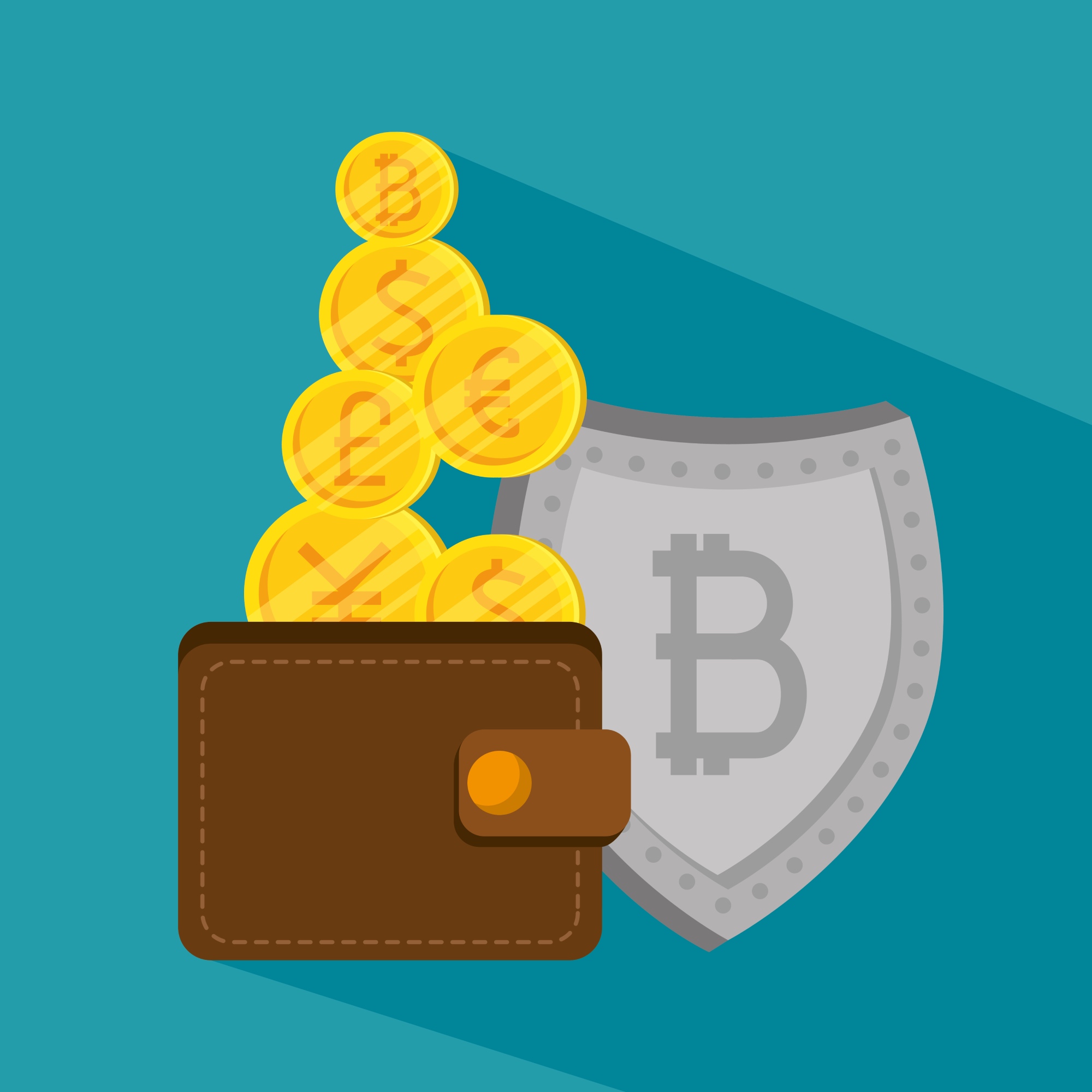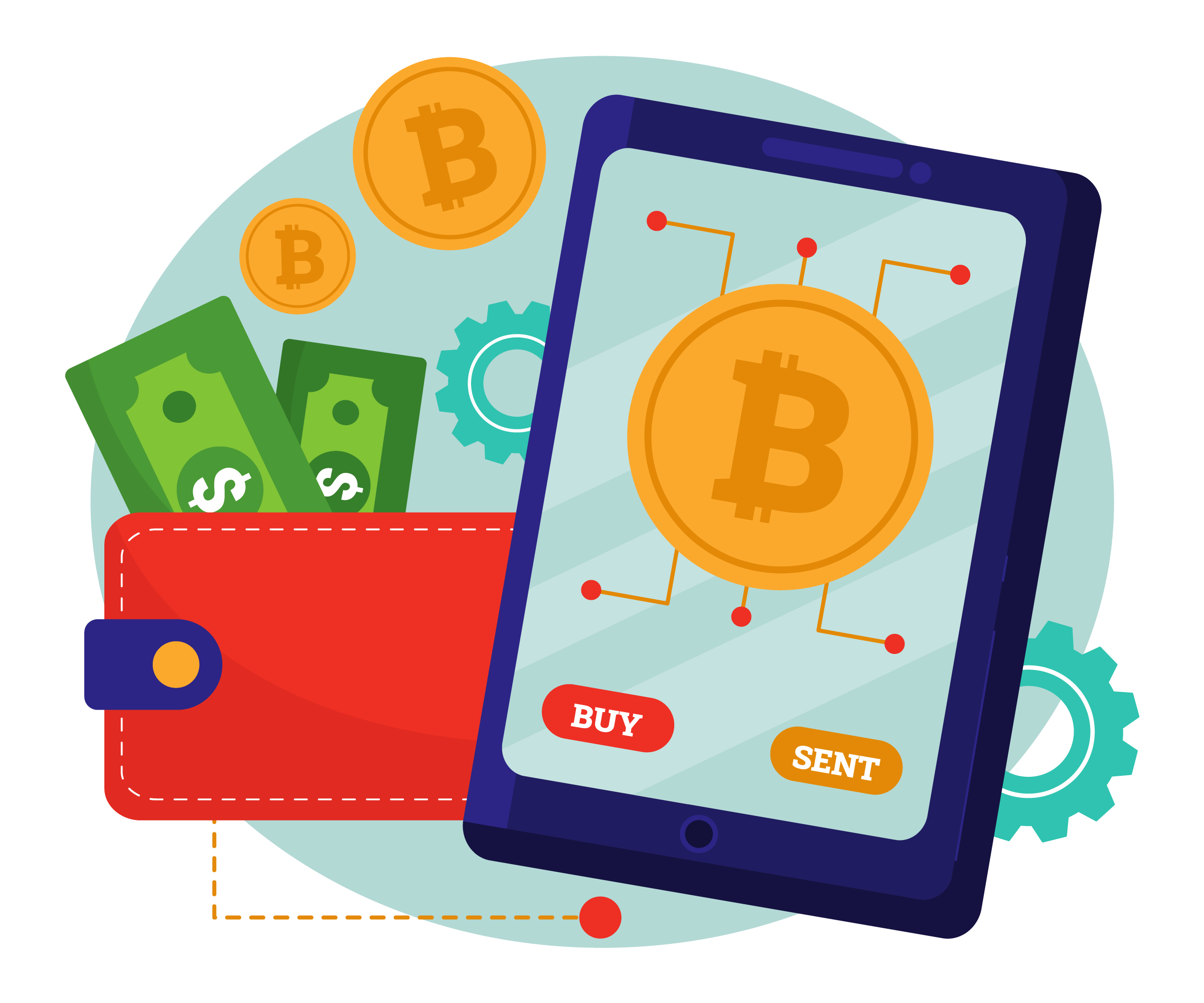How to build a crypto wallet app with React Native – A step-by-step guide
Intro
Cryptocurrencies continue to redefine the process of conducting transactions. Their rising popularity increases the need for reliable and functional crypto wallet apps. These tools play a key role in coordinating digital assets by providing a straightforward way to store, send, and receive multiple cryptocurrencies. As the crypto market expands, the importance of trusted wallet solutions grows.
All in all, how do you build a crypto wallet app? Which tech stack is right for you? Our team at Touchlane looks into React Native, a hugely popular cross-platform solution, and shares its tips on how to use it to build a secure wallet app for cryptocurrencies.
Overview of crypto wallet apps in today’s digital world
Crypto wallets function as gateways to the world of digital currencies. These applications are indispensable to the Web3 ecosystem as they offer secure cryptocurrency storage and transfer, as well as access to advanced tools like real-time asset tracking and DeFi features.
This means businesses that offer a strong wallet app can appeal to the expanding audience exploring digital currencies.
Cryptocurrency – Recent stats
The cryptocurrency market in 2024 grew rapidly, marked by major changes driven by regulatory shifts and technological progress. Institutional adoption has further contributed to creating a positive crypto landscape.
Let us look at some of the recent cryptocurrency stats.
- Bitcoin hit a record high of $108,135 on December 17. This pushed the total cryptocurrency market capitalization to an all-time high of $3.91 trillion.
- Around 27% of American adults own cryptocurrencies, and many intend to increase their holdings within the next year. Popular choices include Bitcoin, Ethereum, Dogecoin, and Cardano.
- Pro-crypto officials in key regulatory positions during the Trump administration increased investor confidence. This shift influenced several countries to adopt policies favoring cryptocurrency legalization.
What is a cryptocurrency wallet?
In essence, a cryptocurrency wallet is an app for overseeing digital currencies. At its core, a cryptocurrency wallet generates and protects entropy, a cornerstone of cryptographic security. Entropy refers to a highly unpredictable and secure random number, often represented as a private key. This private key is the foundation for digital signatures that facilitate blockchain transactions.
Wallets are divided into hot wallets, which stay online for quick access, and cold wallets, which remain offline for secure, long-term storage. In addition, there are decentralized – or non-custodial – wallets that give users full control of their private keys and funds, as well as custodial wallets, where a service provider manages the private keys on behalf of the user.

Why React Native is a solid choice for producing cross-platform crypto wallets
React Native helps programmers design high-performance apps for both iOS and Android with a unified codebase. This approach shortens development time and expenses, which is especially important for startups and SMEs – companies that often operate on a limited budget. The framework’s strong ecosystem, including reusable components and community support, makes it easy to integrate blockchain SDKs and APIs while delivering responsive interfaces ideal for crypto wallet apps.
Core features of a cryptocurrency wallet
When designing a crypto wallet app, focus on incorporating these vital features.
- Support for multiple currencies. Your application’s users should be able to manage several cryptocurrencies in one application.
- Real-time market tracking. Provide live updates on asset values and market trends.
- Secure login. Use techniques such as biometrics, 2FA (two-factor authentication), and PIN protection.
- QR code-based payments. This method makes it easy to transfer and collect funds by simply scanning a code.
- dApps integration. It offers users access to decentralized finance platforms.
- Push notifications. This feature sends alerts about transactions, price changes, and account activity to keep users informed.
- Data protection and restoration. Always add secure options to restore wallets if the device is lost or stolen.
Fundamentals for building a crypto wallet application
If you want to successfully build a crypto wallet, your team should complete several essential steps, from the planning phase to actual development. A truly impactful application not only needs to function smoothly but also requires top-tier security to safeguard confidential financial information, as mentioned above. Here are the core requirements.
Required knowledge and skills for React Native development
JavaScript and React
React Native relies on JavaScript and React, so your engineering team must be proficient in these languages. React, a JavaScript library for building UIs, serves as the core of React Native’s framework. This allows programmers to create native-like apps for several platforms using just one codebase.
API integration
A crypto wallet app interacts with multiple blockchain networks, so strong API integration skills are essential. Developers must implement APIs for securely sending and receiving transactions and retrieving user data.
Security standards
Developers must understand encryption methods and how to set up encrypted storage for private keys. These include but are not limited by:
- private key encryption
- secure storage options (e.g., hardware security modules (HSMs))
- backup mechanisms
- biometric verification
- session management
- end-to-end encryption
- penetration testing
- code audits and dependency checks
- scam awareness features.
Tools and technologies needed (React Native, Node.js, etc.)
Building a cryptocurrency wallet app with React Native requires a set of tools and technologies to create a safe, functional, and simple-to-navigate app. The following outlines the key components involved in this development process.
Technologies
React Native
The framework delivers high efficiency and robust performance, which makes it one of the best choices for crypto wallet apps that demand encryption and authentication features.
Node.js
Node.js, a server-side runtime environment, powers scalable back-end systems. It manages core app functions like coordinating transactions and processing user data.
Web3.js
This JavaScript library interacts with Ethereum blockchain nodes and allows users to send transactions and administer accounts in the wallet app.
Infura
Infura is used for an efficient connection as it offers direct access to Ethereum and IPFS networks without requiring a full node.

Development tools
Code editor
A powerful code editor such as Visual Studio Code is crucial for writing and organizing your code with precision.
Version control system (Git)
Engineers use Git to track code changes, collaborate effectively, and manage application versions.
React Native CLI or Expo
These tools make it easy to set up the React Native environment. Expo provides extra features that speed up development but may have some constraints compared to a standard React Native setup.
Testing frameworks
You can use instruments like Jest or Mocha for unit testing to confirm that all components work as intended.
Libraries and dependencies
React Navigation
To manage navigation within the app and allow users to move effortlessly between screens.
React Native vector icons
This library offers customizable icons to improve the wallet app’s user interface.
React Native Elements
A UI toolkit that speeds up development by offering ready-made UI elements.
Creating a secure wallet
First and foremost, your team must focus on security. Here are the tips on how to implement the most crucial features.
Generate and safeguard private keys
Use libraries like react-native-crypto to generate private keys in a secure way. Store them in a secure environment to protect them from unauthorized access.
Employ keychain services for secure information storage
For keeping critical data – like private keys – safe, rely on options such as iOS’s Keychain or Android’s Keystore, with the help of libraries like React Native Keychain.
Activate password and biometric authentication
Combine password protection with biometric access control (e.g., face recognition). Utilize libraries like react-native-fingerprint-scanner for extra security.
Confirm data encryption and secure transmission
Encrypt data transmitted over the network using TLS to protect sensitive information from interception.
Add two-factor authentication
Utilize 2FA to protect accounts by using services like Google Authenticator or Authy to generate time-based one-time passwords for transaction verification.
Prevent vulnerabilities like MITM and phishing
Protect against man-in-the-middle (MITM) attacks with certificate pinning and educate users about phishing risks. Implement URL validation and security alerts.
Interested in the topic of crypto app development? Check out Touchlane’s guide on building a mining app.
Incorporating blockchain with cryptocurrencies
One of the most important parts of producing a crypto wallet is connecting it to blockchain networks. This step is necessary for allowing your app’s users to control their assets on the blockchain.
Where to begin?
The process starts by linking the application to blockchain networks like Bitcoin and Ethereum. They provide individual APIs for accessing balances and transaction details, as well as performing actions. The application must also permit users to send and get cryptocurrencies through generating, signing, and broadcasting transactions. To protect transaction integrity, the app needs to store private keys and validate them before forwarding to the blockchain for confirmation. For Ethereum integration, libraries like Web3.js or ethers.js simplify interaction with the blockchain.
How to test your crypto wallet app
For businesses, a smooth and secure user experience translates directly into customer trust and long-term success. And user satisfaction depends heavily on testing. Below, Touchlane’s team offers advice on how to properly test your crypto wallet application.
Best practices for testing React Native apps
When testing React Native apps, it is essential to follow best practices that focus on both the user journey and performance. Start by using automated testing tools like Jest or Detox for consistent and efficient results. These tools help identify bugs early and facilitate code updates without compromising the app’s integrity.
Perform comprehensive testing on multiple devices and platforms to guarantee compatibility and responsiveness.
Assessing wallet capabilities and blockchain integration
Every crypto wallet app demands accurate communication with blockchain networks. Verifying these interactions guarantees users can manage their currencies without issues. Focus on testing the core wallet features, such as:
- transaction initiation
- balance updates
- multi-currency support.
Use simulated blockchain environments or testnets to run transaction simulations and confirm accuracy. Also, pay attention to transaction speed and error handling during peak network activity to prevent user dissatisfaction.

Security testing for protecting your app’s users’ funds and data
Protecting user funds and sensitive data requires well-performed testing, particularly around encryption and authentication processes. Your team should start by performing vulnerability assessments to identify potential security loopholes. Test common attack vectors – including man-in-the-middle, cross-site scripting (XSS), and SQL injection – to make sure that the app stands strong against external threats.
Moreover, you should employ encryption protocols like AES-256 to safeguard users’ private keys and wallet credentials. Additionally, MFA should be implemented to further secure the user’s account. Regularly conduct penetration testing to assess the resilience of the app under various attack scenarios.
Benefit from Touchlane’s own experience with crypto mining apps by reading our Gaimin case study.
GaiminHow to deploy your crypto wallet app
Once your crypto wallet app development team is done with testing, you can proceed to deploy the application. This stage involved getting it ready for public release and checking if it delivers the intended experience. Here is how the process unfolds.
Preparing the application for deployment
We have touched upon the importance of testing in the previous section. When you have identified any potential bugs or operational issues, you need to make sure the app complies with the guidelines set by Apple and Google to avoid unnecessary delays during the submission process. Your checkbox should include:
- compatibility with the latest operating systems
- proper security measures
- required file formats for assets like app icons and splash screens
- proper configurations for APIs, wallets, and other integrations.
Submit your app to the App Store and Google Play Store
Submitting your application involves registering developer accounts with Apple and Google. Prepare comprehensive app descriptions, keywords, and screenshots that highlight the app’s features.
Apple’s review process can take longer due to its stricter policies. If you provide accurate information and address potential compliance issues beforehand, it can help speed up the process. The review process of Google Play is usually faster but requires similar attention to detail.
Post-launch monitoring and updates
Once the app is live, monitoring its performance becomes crucial. Track metrics like download numbers, user feedback, and crash reports to gain insights into how the app is performing. Addressing user feedback quickly helps maintain trust, while regular updates promote improvements in blockchain technology.
Pitfalls of crypto wallet app development
Overcoming blockchain constraints and latency issues
As a technology, blockchain delivers fortified security, but its decentralized organization can result in slow transaction speeds, particularly during peak usage. Selecting a reliable blockchain with consistent performance can mitigate these concerns.
Addressing regulatory and compliance issues
Crypto rules fluctuate globally, and staying compliant is an ongoing challenge. Developers must incorporate region-specific requirements to meet legal standards while protecting the app’s credibility. Examples of such regulations include:
- KYC (Know Your Customer)
- AML (Anti-Money Laundering)
- Licensing requirements (money transmitter licenses, global licensing)
- Data protection laws (GDPR)
- Consumer protection laws
- Regulatory frameworks (EU’s Markets in Crypto-Assets (MiCA))
- Industry standards (BIP39, BIP44).
Staying updated on changes in legislation is critical to maintaining legal operations.
Scaling the app to accommodate growth
As the user base grows, your mobile crypto wallet app will need to handle increased traffic and larger volumes of data without interruptions. From selecting scalable backend architecture to implementing strong data management practices, planning for growth is essential to maintain performance and reliability.
Conclusion
Building a crypto wallet app with React Native offers businesses a tremendous opportunity to meet the increasing demand for secure and user-friendly cryptocurrency solutions. If you combine a thoughtful approach to development with strong security practices and thorough testing, you can create an application that meets user expectations and builds confidence in your brand. With the right team and tools, your crypto wallet can serve as a gateway for users to explore and manage digital assets effectively.
And you are looking for a tech partner to support your crypto wallet app development, reach out to us for an in-depth conversation. At Touchlane, we know how to make a crypto wallet app – and make it stand out among similar solutions.
RELATED SERVICES
CUSTOM MOBILE APP DEVELOPMENT
If you have an idea for a product along with put-together business requirements, and you want your time-to-market to be as short as possible without cutting any corners on quality, Touchlane can become your all-in-one technology partner, putting together a cross-functional team and carrying a project all the way to its successful launch into the digital reality.
If you have an idea for a product along with put-together business requirements, and you want your time-to-market to be as short as possible without cutting any corners on quality, Touchlane can become your all-in-one technology partner, putting together a cross-functional team and carrying a project all the way to its successful launch into the digital reality.
We Cover
- Design
- Development
- Testing
- Maintenance











